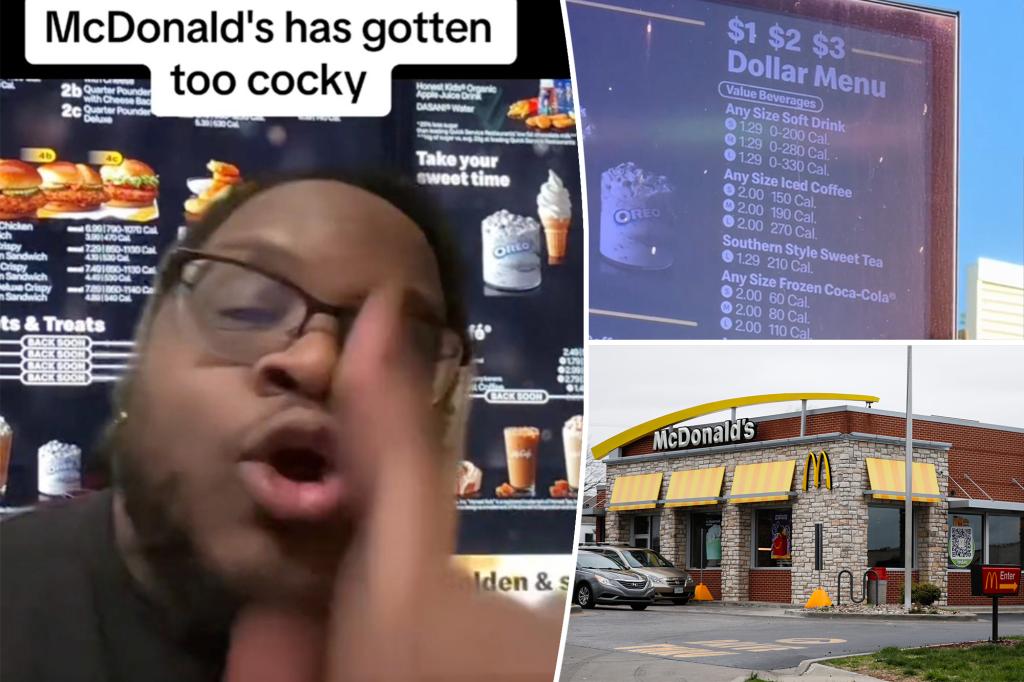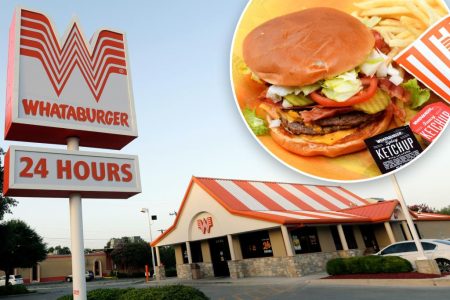McDonald’s recent changes to their Dollar Menu have sparked outrage among customers, with many feeling that the lack of dollar food offerings defeats the purpose of the menu. TikToker Anna Arroyo pointed out that the least expensive items on the menu were a McChicken and small French fries, both priced at $1.99 each. This has led to complaints from customers who remember the days of being able to get a regular hamburger for 89¢ and a small fry for $1. As a result, a quarter of consumers making less than $50,000 a year report eating less fast food, with many opting for fast-casual and full-service restaurants instead.
McDonald’s franchisees have increased their prices by about 10% in recent months, leading to further dissatisfaction among customers. Last year, the chain faced backlash for offering $18 Big Mac meals, causing some customers to think twice before dining at McDonald’s. Tennessee musician Lauren Oxford used to indulge in two double hamburgers, fries, and a drink for less than $5 but is now reconsidering due to rising prices. Customers have been taking to platforms like TikTok to express their frustration over the inflated prices, with one customer paying $20 for two Steak, Egg & Cheese Bagel combos and feeling disappointed by the lack of budget-friendly options.
In response to the backlash, McDonald’s executives have emphasized the importance of their “value menu” and targeting low-income consumers, especially those making under $45,000 a year. CEO Chris Kempczinski highlighted the significance of appealing to the low-budget crowd, acknowledging that this demographic is crucial to the success of the fast-food chain. As a result, McDonald’s is facing a challenging balancing act of providing affordable options while navigating price increases and the changing preferences of their customer base.
The recent changes to McDonald’s Dollar Menu have highlighted a disconnect between the company’s pricing strategy and customer expectations. Many customers feel that the Dollar Menu’s name is misleading, given that there are no items priced at $1 on the menu. As a result, customers are opting to eat at alternative fast-casual and full-service restaurants rather than paying for more expensive options at McDonald’s. The chain’s decision to increase prices has further exacerbated the situation, leading to dissatisfaction among customers who remember more budget-friendly options in the past.
The impact of these changes is evident in the shifting consumer behavior, with a quarter of customers making less than $50,000 a year reporting eating less fast food in response to price increases. McDonald’s franchisees have faced criticism for inflating prices, with some customers expressing their disappointment over the lack of affordable options on the menu. This backlash has been reflected on social media platforms, with customers voicing their frustration over paying higher prices for items that were once more budget-friendly. In response, McDonald’s executives are focusing on targeting low-income consumers and emphasizing the importance of their value menu in appealing to this demographic.
Overall, McDonald’s is facing a challenging situation as they navigate customer dissatisfaction, changing consumer preferences, and the need to balance affordability with profitability. The recent changes to the Dollar Menu have sparked backlash from customers, leading to a shift in consumer behavior and a call for more affordable options. As McDonald’s grapples with these challenges, the company’s ability to appeal to low-income consumers and provide budget-friendly options will be crucial to their success in a competitive fast-food landscape.















